
Mortellaro's Nursery
Shrubs, trees, ground covers, native plants, and seasonal color
Wholesale Only
Click on any of the alpha indexes below to view the corresponding lists of plants.
The default list is displayed alphabetically by common name for all plant types. You can view the plants by clicking on the Scientific Name or limit the plant type by using the drop down.
Plants actively being grown for the current season are shown -- selecting Discontinued Items will show plants we have offered in the past.
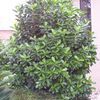
|
Viburnum, awabukiBotanical Name: Viburnum awabuki 'Chindo'
A native to South Korea, Awabuki is one of the fastest growing viburnums available. The leaves emerge light green, turning dark green and reaching up to eight inches long; they are very lustrous and have a leathery texture to them. It’s best to prune in late winter to promote even, uniform growth throughout the summer – it won’t hurt to prune the excessive growth midsummer to put another flush round of foliage before winter. Grows unchecked as a large shrub, but can easily be trimmed into a small, multi-branched tree with a natural round canopy. Fragrant white blooms appear in the late spring, leaving red berries soon after that turn black by the fall, attracting birds easily. As with all viburnums, it has some of the highest deer tolerance. Best grown in moist, fertile soils but can be forgiving of slightly less conditions. [ More Info ]
|
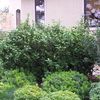
|
Viburnum, SuspensumBotanical Name: Viburnum suspensum
Native to Japan, the Sandankwa Viburnum is an excellent deer resistant shrub with an open spreading growth habit. Branches quickly grow out of the main shrub, but regular pruning will encourage a small, compact and full shape. Unpruned, it will grow ragged, reaching up to twelve feet tall and wide. The leaves start light green, but become dark green as they mature. They are oval-shaped with serrated edges, highly aromatic, and sometimes used in flower arrangements. Small tubular flowers are borne on the ends of new branches in the spring, and sporadically appear in the summer. They are white to pale pink, followed by small red berries in the fall that attract wildlife. Moist, well drained soils are highly recommended. [ More Info ]
|
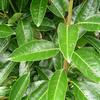
|
Viburnum, SweetBotanical Name: Viburnum odoratissimum
The Sweet Viburnum is an excellent large shrub or small tree native to Asia that has established itself in the Texan landscape. It is fast growing and relatively pest and disease free, and as a viburnum it’s as deer resistant as any plant can hope for. The smooth, leathery leaves can grow up to six inches long; they are dull green on one side and bright green on the other. In full sun, it creates a thick and lush shrub that is ideal for privacy screens or sound breaks along fence lines. In the shade it will not grow as robust, but slight pruning will encourage thicker growth. With only minimum pruning of lower branches, it easily forms into a small tree with a natural multi-trunked canopy. In the spring, tiny white flowers nearly cover the entire plant and are very fragrant, contributing to its name. Red drupe berries follow, turning black in the fall, attracting birds easily. [ More Info ]
|
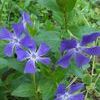
|
Vinca MajorBotanical Name: Vinca major
Evergreen vine that spreads up to five feet in width, and grows slightly over 12 inches in height. Light blue flowers appear on new growth throughout the spring and summer.
[ More Info ]
|

|
Vinca PeriwinkleBotanical Name: Catharanthus roseus
2024 [ More Info ]
|
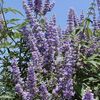
|
Vitex, Chaste TreeBotanical Name: Vitex agnus-castus
Vitex, also known as Chaste Tree, is a small deciduous ornamental tree that grows fairly fast and is tolerant of adverse environments such as heat, drought, high winds, and poor soil types. Although native to Europe and Asia, it has become naturalized in the southern states and used extensively. [ More Info ]
|
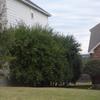
|
XylosmaBotanical Name: Xylosma congestum
Native to China, the Xylosma is an ideal selection for privacy screens, windbreaks, or foundation plantings as it grows wider than it gets tall. Commonly grown as a shrub, it can be pruned into a tree form. New foliage starts out red to bronze, then turns glossy green while on long, graceful arching stems. Xylosma isn’t susceptible to many plant diseases or pest. Inconspicuous yellow-green blooms appear in the early fall, but are followed by small black fruits that compliment the foliage well. Although evergreen, the Xylosma can drop leaves if exposed to freezing temperatures. [ More Info ]
|
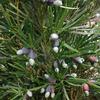
|
Yew, JapaneseBotanical Name: Podocarpus macrophyllus
Slow growing evergreen shrub native to Japan and southern China that has adapted well to the southern landscape. Naturally forms a conical to dome shape, and is commonly pruned into uniformed shapes for hedges, topiaries, or screens. The foliage is dark green and needlelike, whorled around the stems. Male plants have catkins that produce pollen. The females produce blue-green berries attached to attractive, yet mildly toxic, droop fruits that can be red, yellow, and dark purple. The Japanese Yew tolerates poor soil conditions as long as good drainage is provided. Japanese Yew grows well in the shade and sun, and can fit a variety of landscape needs when pruned into any form. [ More Info ]
|

|
Yucca, Adam's Needle Leaf (Variegated)Botanical Name: Yucca filamentosa 'Variegata'
[ More Info ]
|
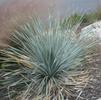
|
Yucca, Blue SotolBotanical Name: Dasylirion wheeleri
Inappropriately named, the Blue Sotol Yucca is a member of the Lily Family. Despite this, it is a tough and durable Texas native that makes a fine addition in any Texas landscape. Blue Sotol forms a rosette of blue-green leaves that are only up to three feet long, but are lined with a multitude of very sharp spines; be sure to plant away from any walking paths. Extravagant flower stalks can reach up to fifteen feet in height, then the flower spike reaches an additional three feet. Numerous small white flowers appear on the flower spike starting in mid-summer and persist into the fall, easily attracting butterflies. The Blue Sotol Yucca is dioecious, meaning the flowers are either male or female on the single plant.
[ More Info ]
|
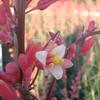
|
Yucca, RedBotanical Name: Hesperaloe parviflora
A Texas native succulent plant that is an ideal choice for hot and dry areas. The leaves grow up to four feet long, rolled up halfway and have curly threads along the margins. It will form clumps over time, reaching an average width of five feet. Flower stalks first appear in the spring and through the summer bearing many coral-pink flowers that attract butterflies and hummingbirds. Red Yucca is tolerant of many adverse soil conditions and blooms best in full sun. It also tolerates salty environments. [ More Info ]
|
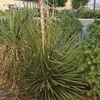
|
Yucca, SotolBotanical Name: Dasylirion texanum
Inappropriately named, the Sotol Yucca is a member of the Lily Family. Despite this, it is a tough and durable Texas native that makes a fine addition in any Texas landscape. Sotol forms a rosette of leaves that are only up to three feet long, but are lined with a multitude of very sharp spines; be sure to plant away from any walking paths. Extravagant flower stalks can reach up to fifteen feet in height, then the flower spike reaches an additional three feet. Numerous small greenish-white flowers appear on the flower spike starting in mid-summer and persist into the fall, easily attracting butterflies. The Sotol Yucca is dioecious, meaning the flowers are either male or female on the single plant.
[ More Info ]
|
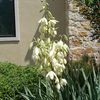
|
Yucca, WeepingBotanical Name: Yucca recurvifolia
A naturalized Texas shrub with excellent tolerance to hot and dry climates. The blueish-green flat leaves have a sharp tip, and grow up to three feet in length, bending downward over time. Weeping Yucca begins as a uniform rosette shrub, growing upward on a single trunk reaching heights of five to six feet before falling over its own weight. New trunks will sprout where the main trunk makes contact with the ground, making it a multi-trunk shrub. The flower stalk can grow up to five feet above the foliage, displaying a large cluster of white to pale yellow bell-shaped flowers in the early spring that last into the summer. [ More Info ]
|
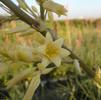
|
Yucca, Yellow BloomingBotanical Name: Hesperaloe parviflora
A Texas native succulent plant that is an ideal choice for hot and dry areas. The leaves grow up to four feet long, rolled up halfway and have curly threads along the margins. It will form clumps over time, reaching an average width of five feet. Just like the regular Red Yucca, the flower stalks first appear in the spring and through the summer bearing many yellow flowers that attract butterflies and hummingbirds. This yellow blooming Yucca is tolerant of many adverse soil conditions and blooms best in full sun. It also tolerates salty environments. [ More Info ]
|
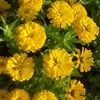
|
ZinniaBotanical Name: Zinnia elegans
Mortellaro's Nursery stocks only dwarf cultivars of Zinnia elegans. This attractive annual has an upright bushy growth habit, with solitary daisy like flowers in a variety of colors. Zinnias are best planted in well drained soil in full sun, and watered infrequently as they are susceptible to leaf spot and mildew. The best way to inhibit powdery mildew is plant them in an open space with plenty of air circulation. They are an ideal Texas summer annual as it enjoys the hot summers up till the first fall frost. [ More Info ]
|
